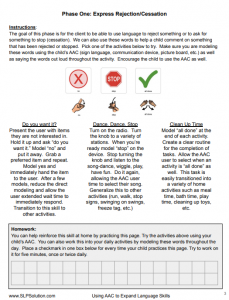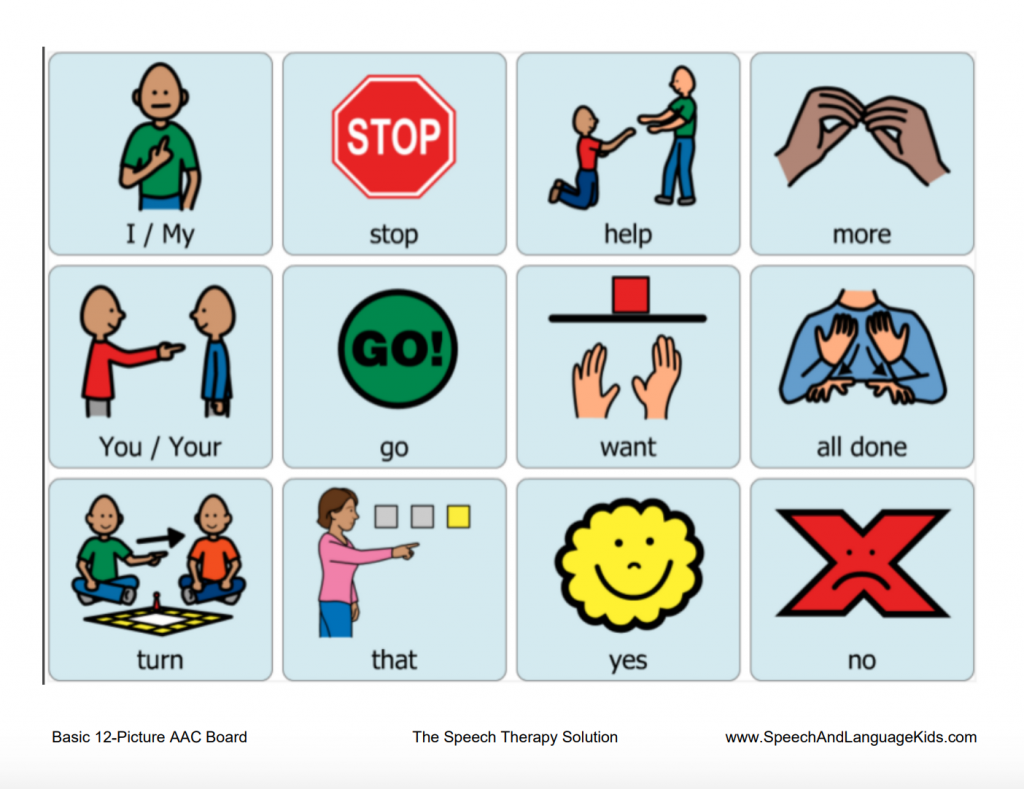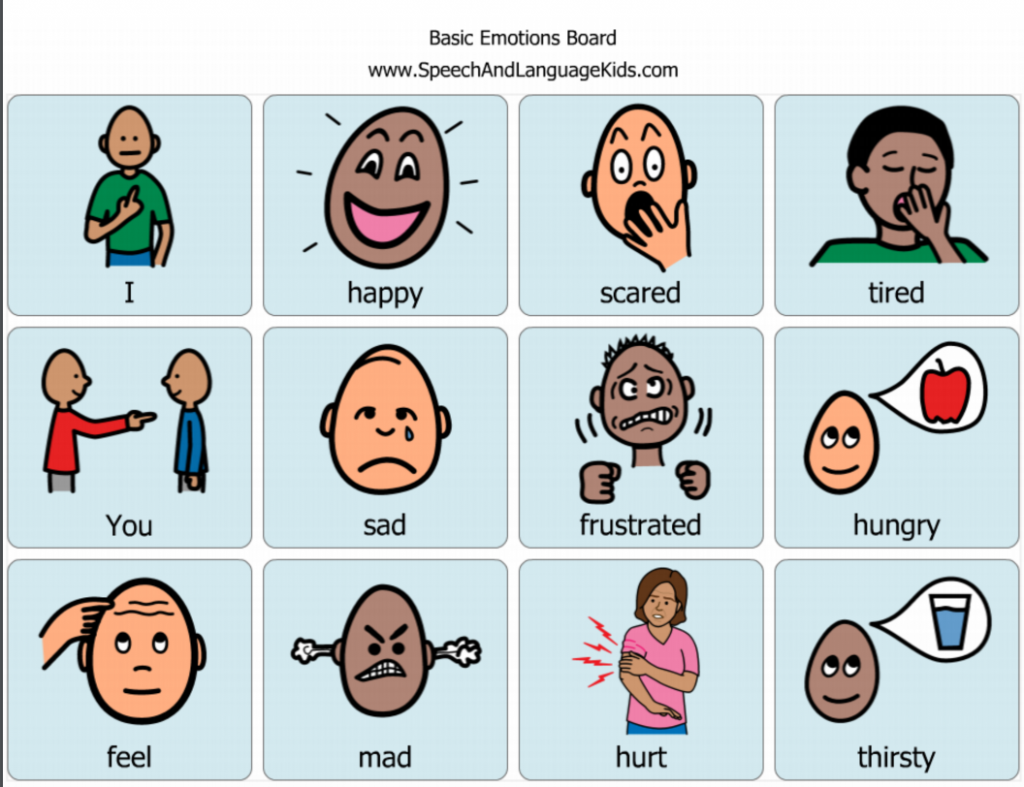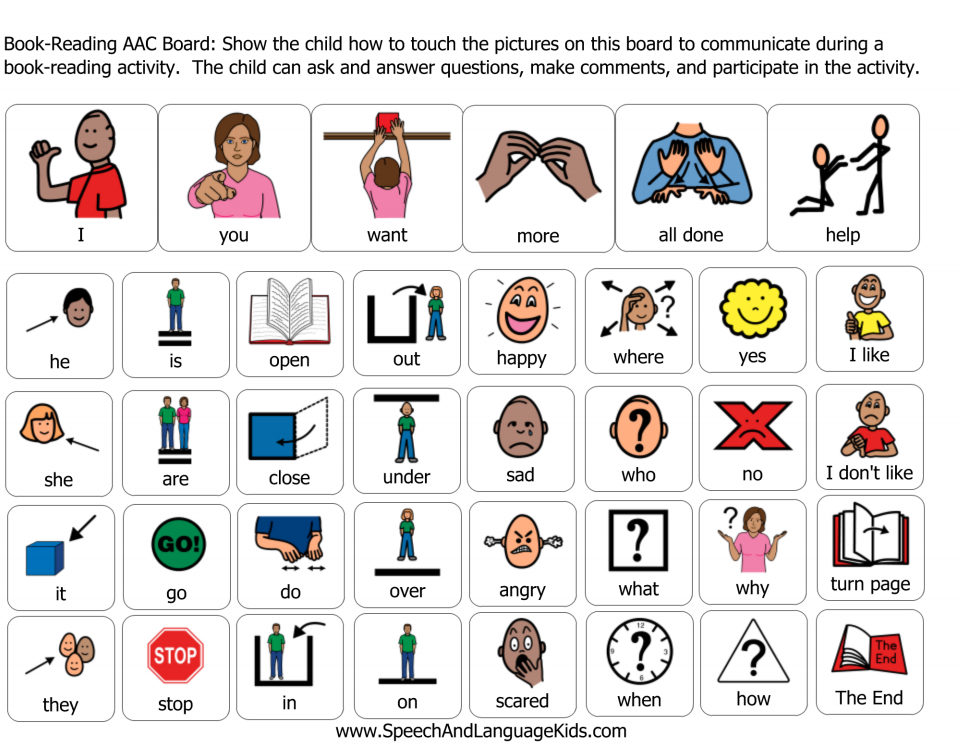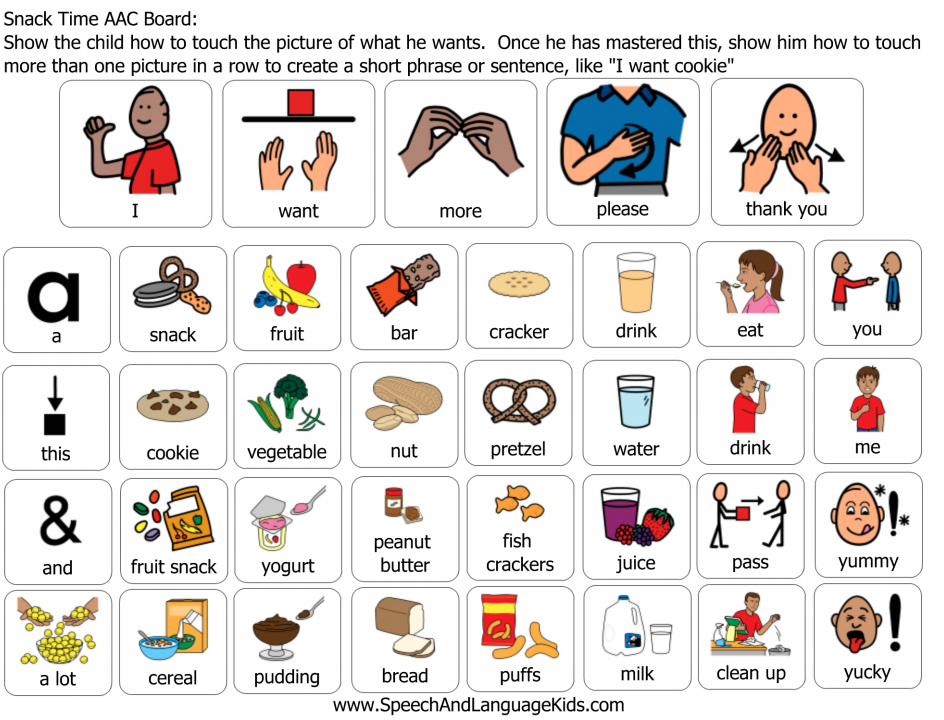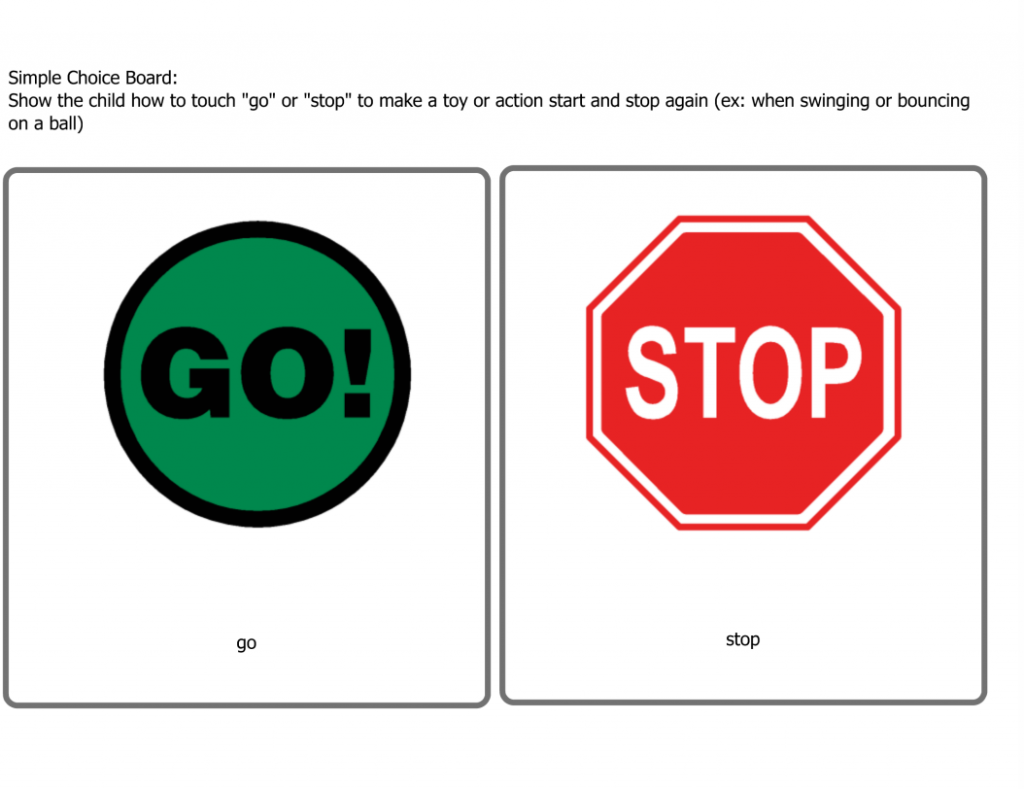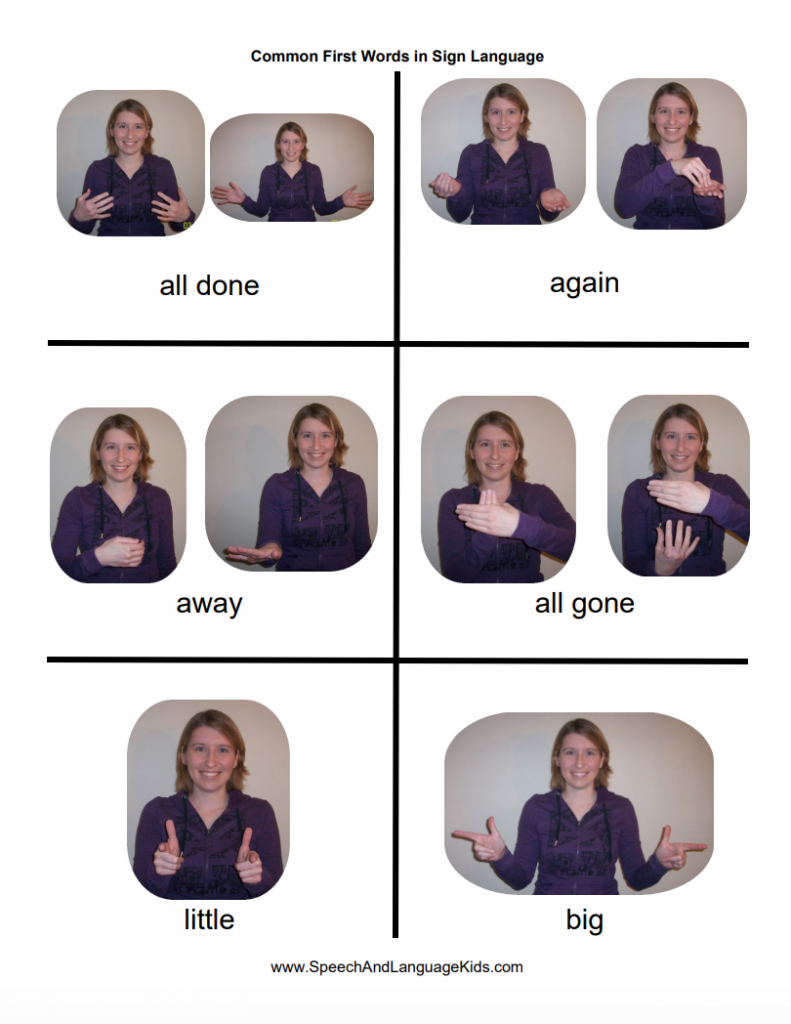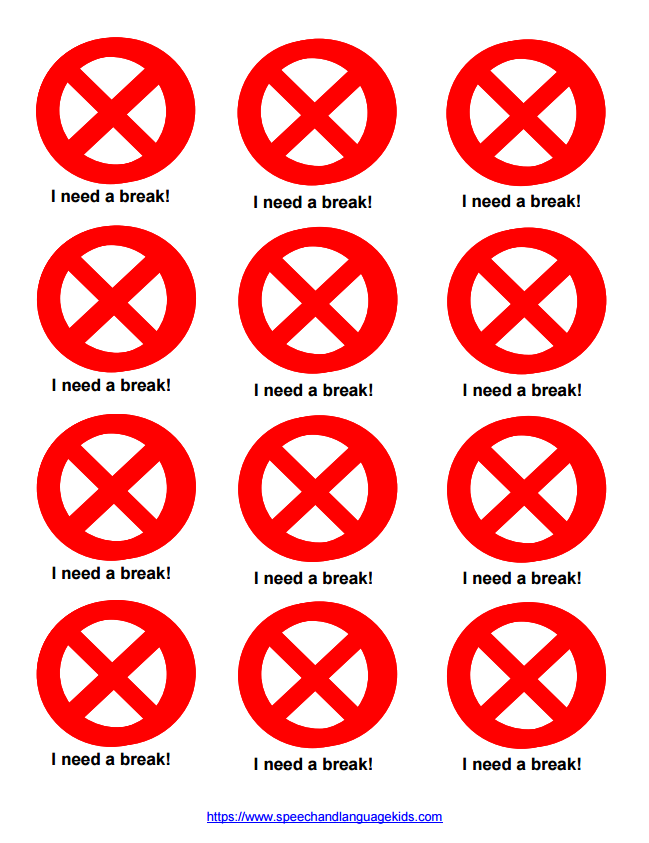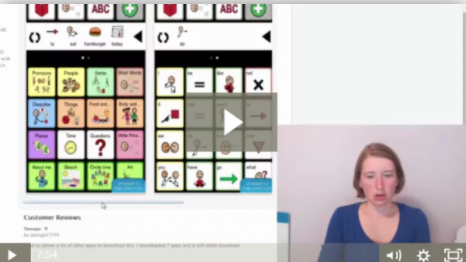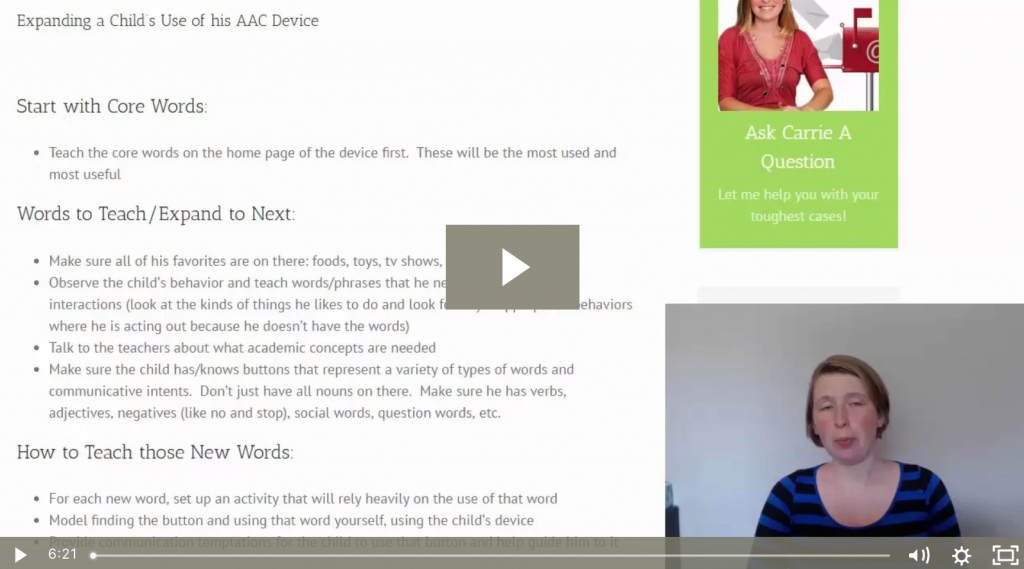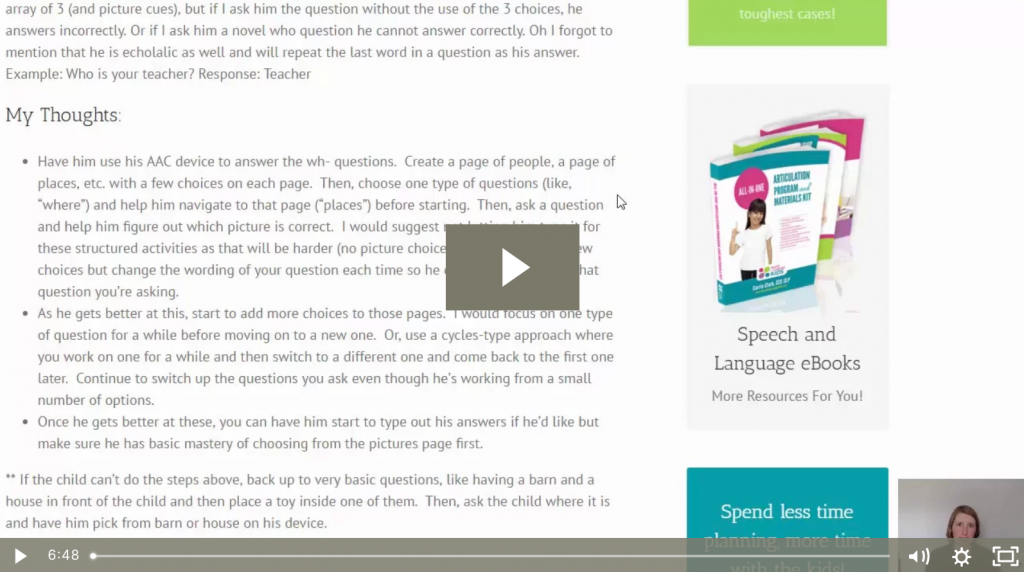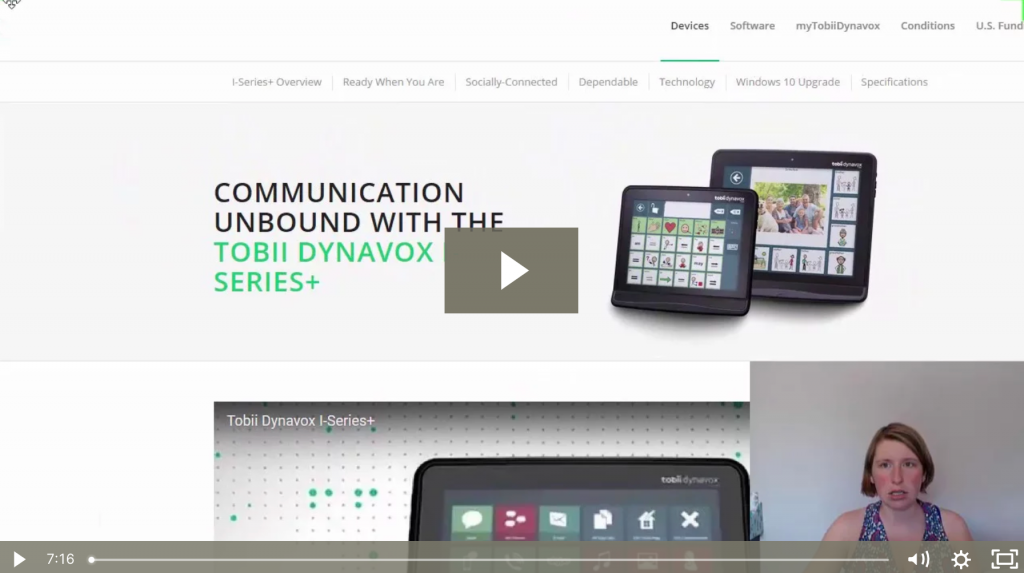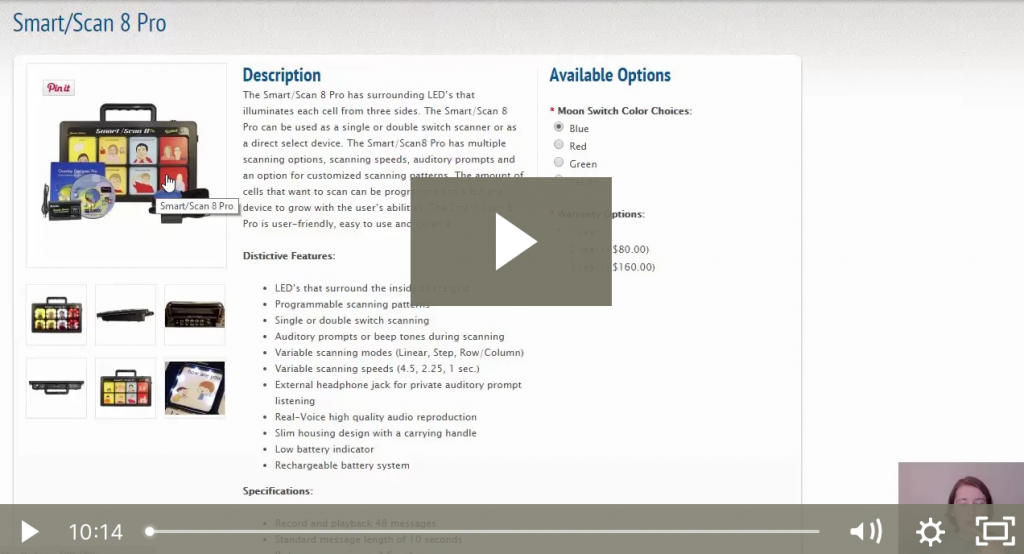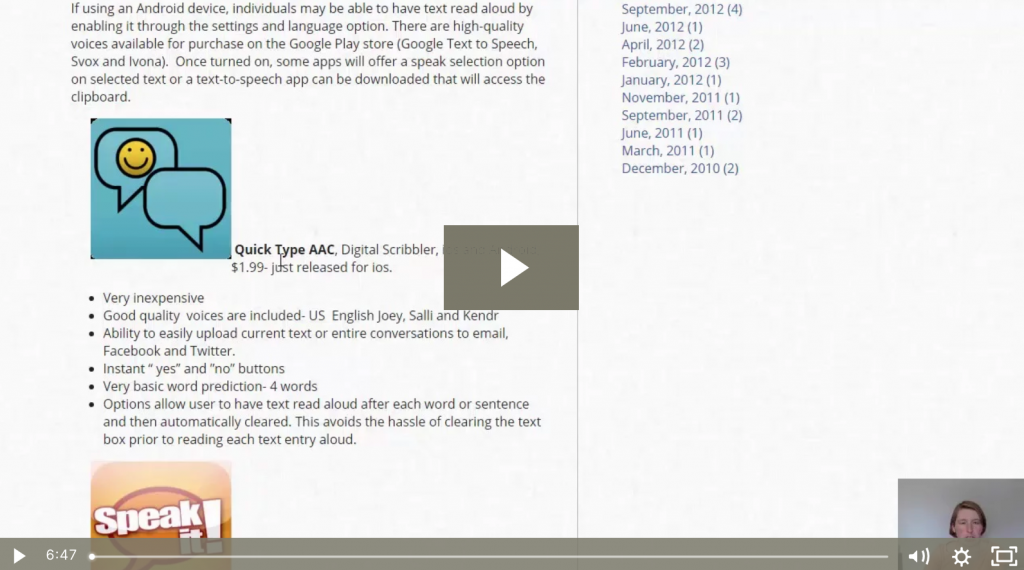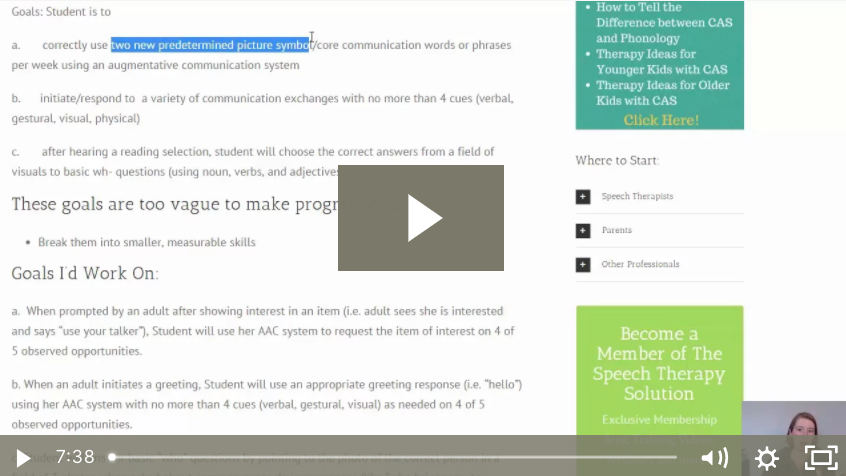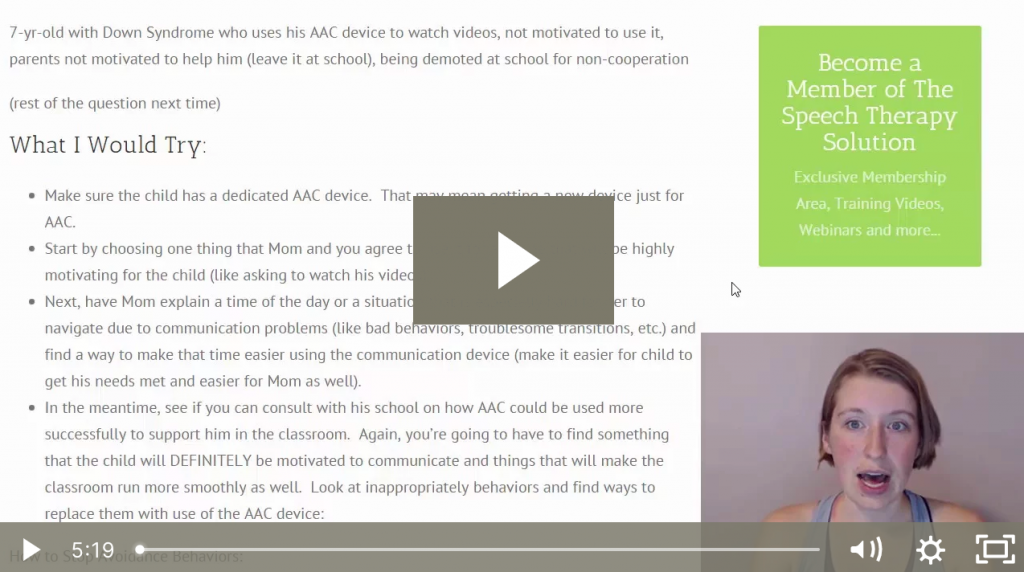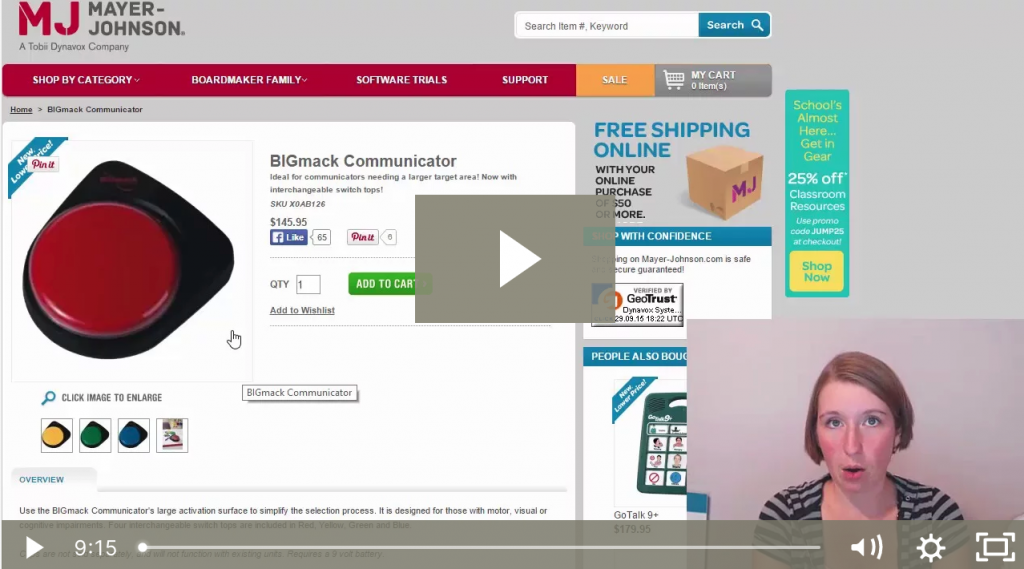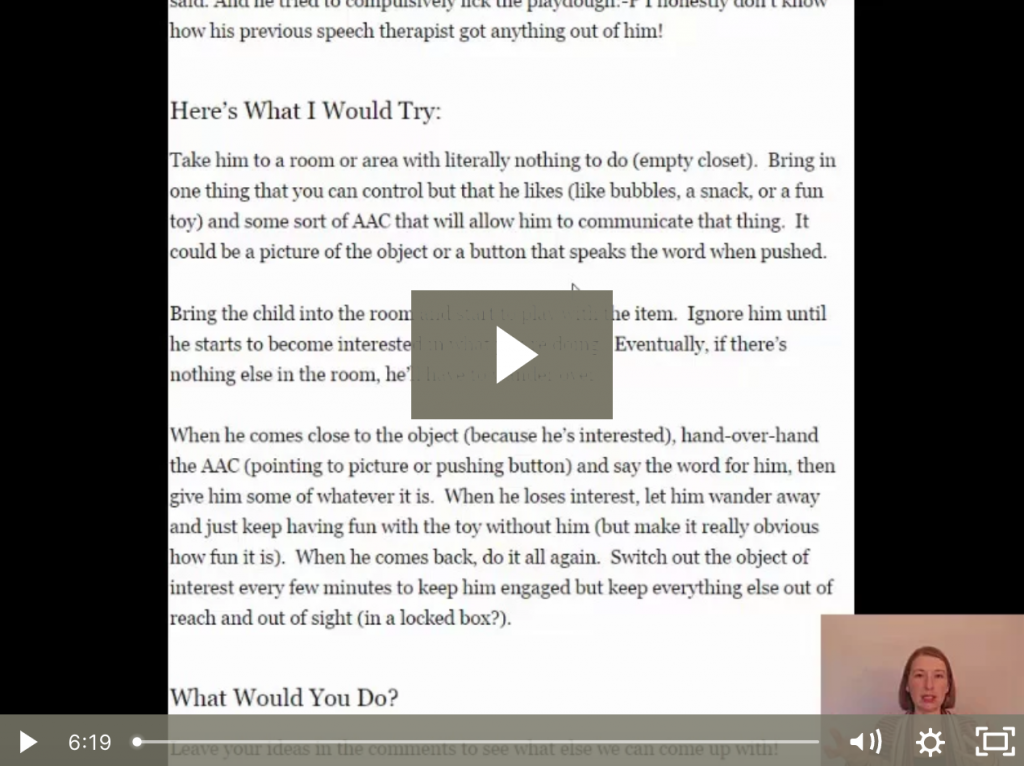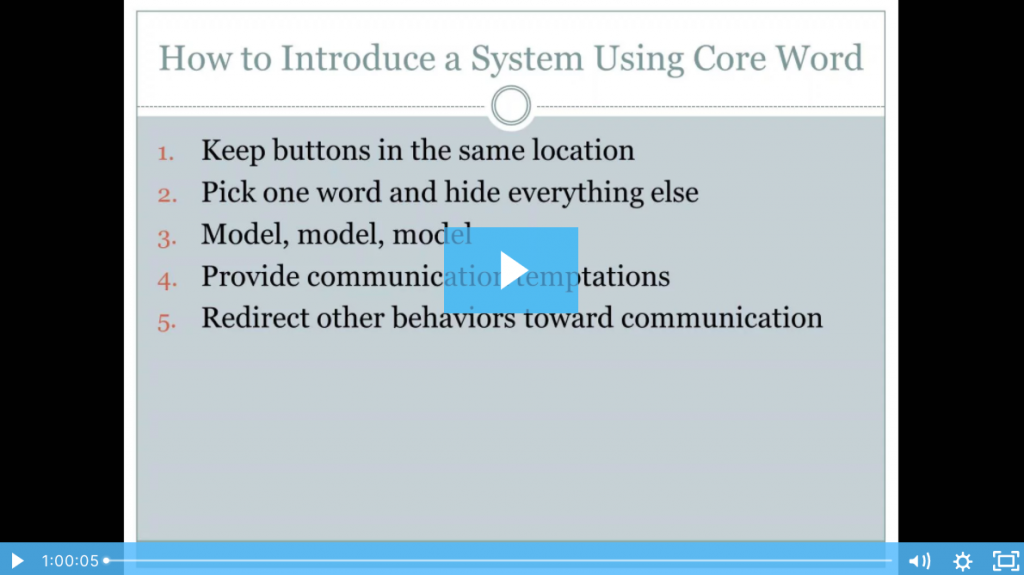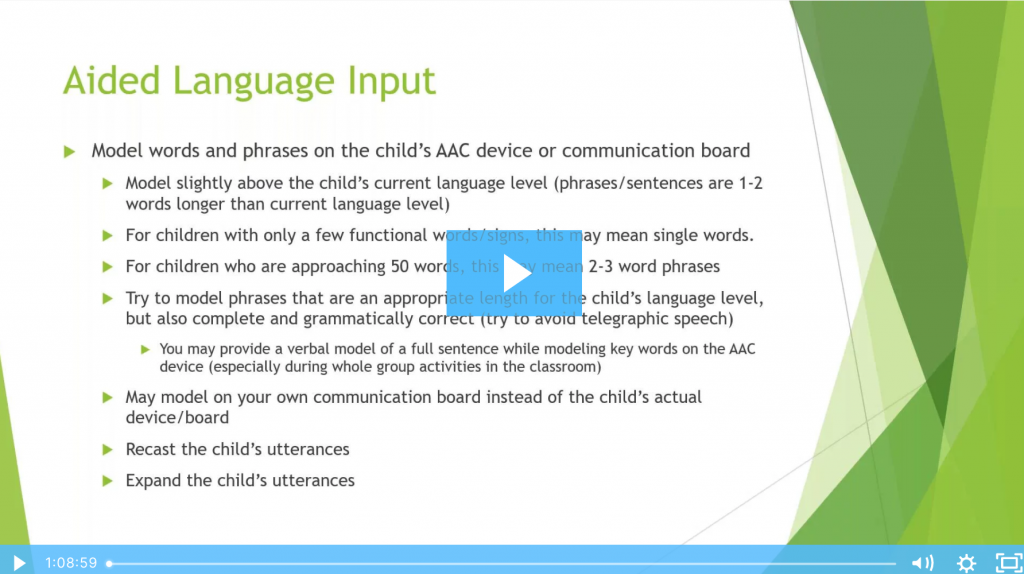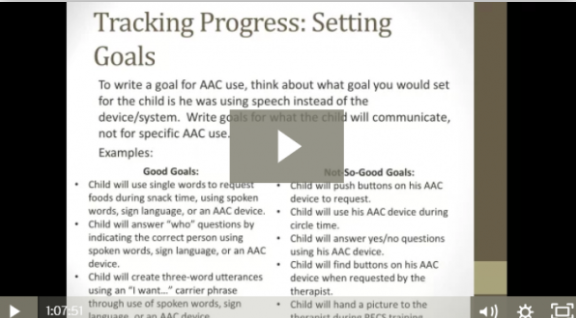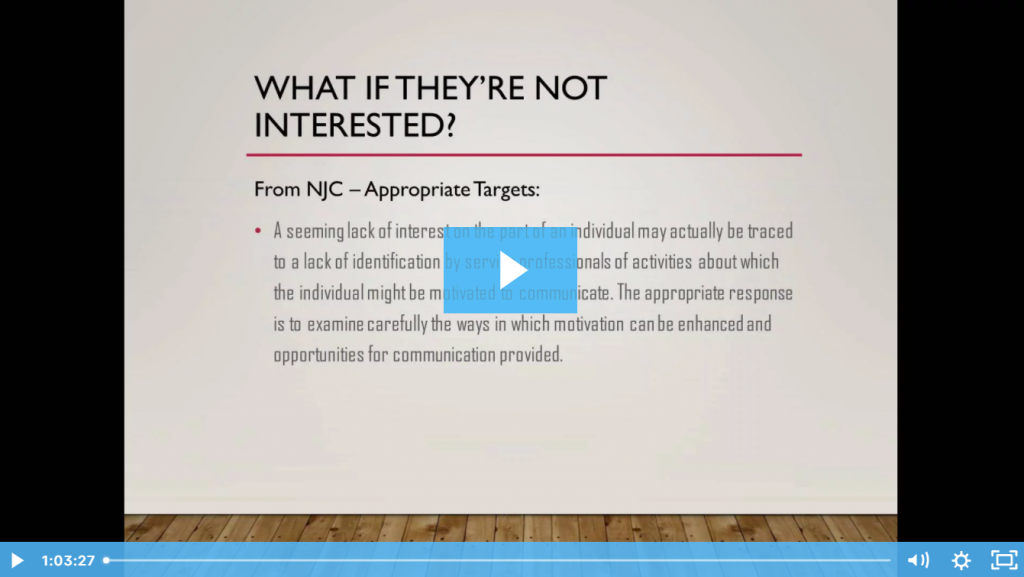Goal: Use AAC to Expand Language Skills
Augmentative and Alternative Communication (AAC) is how we help children to communicate who aren’t able to use their speech mechanisms as well as they need to. Once a child is able to use his/her AAC system for functional communication, we are ready to work on expanding language skills. We can teach our clients to use their AAC for a variety of different communicative intents.
Sample Goal:
During a 10-minute interaction with the therapy (who is modeling AAC use), Client will spontaneously use alternative and augmentative communication (AAC) or spoken speech to express at least _(number)_ different communicative intents (examples: rejection/cessation, recurrence, actions, attributes, possession, location, self-advocacy). <Therapist should specify a number of different communication types for goal>
Download the No-Prep Therapy Kit:
We have a start-to-finish therapy kit that will give you everything you need to practice this skill in therapy and send home homework. Click the packet below to open it. Then, print it out and place it in the child’s notebook or binder.
Therapy Phases:
**Pre-requisite: Make sure the client is able to use their AAC system for early, functional communication before beginning this set. Click here to find the resources on using AAC to teach early, functional communication.
- Rejection/Cessation: During a therapy activity that models and elicits this skill, Client will spontaneously use AAC (or spoken speech) to express rejection/cessation at least 5 times.
- Recurrence: During a therapy activity that models and elicits this skill, Client will spontaneously use AAC (or spoken speech) to express recurrence at least 5 times.
- Actions: During a therapy activity that models and elicits this skill, Client will spontaneously use AAC (or spoken speech) to express actions at least 5 times.
- Descriptors: During a therapy activity that models and elicits this skill, Client will spontaneously use AAC (or spoken speech) to describe objects (using attributes) at least 5 times.
- Possessives: During a therapy activity that models and elicits this skill, Client will spontaneously use AAC (or spoken speech) to indicate possession at least 5 times.
- Locatives: During a therapy activity that models and elicits this skill, Client will spontaneously use AAC (or spoken speech) to indicate location (using spatial concepts) at least 5 times.
- Self-Advocacy: During a 10-minute activity of daily living, Client will spontaneously use AAC (or spoken speech) at least 5 times to advocate for self, by expressing a want/need or making a choice.
Supplemental Materials
Here are some other resources that may help you when working on this skill:
Here is a list of options for AAC devices, methods, and systems that you may want to consider.
This simple board has 12 common word choices that you can print out and use during a therapy activity. Just have the child point to the word he/she wants to communicate.
This simple 12-picture AAC board will help a child talk about emotions.
Book-Reading Activity AAC Board
A basic AAC board that can be used to help a child communicate during a book-reading activity or story time. Great for circle time in a classroom. This is not intended to be a long-term AAC solution, but rather a test board that you can use to help a child begin to communicate using pictures. Or, use this board to see if a child is ready to move up to an AAC system with more choices or pictures.
Here is a slightly more complex AAC board that can be used at snack time. Pull out some snacks during your speech therapy session or send it home with parents (with a little training) to allow a child to use AAC to communicate during snack time.
“Go/Stop” 2-Button AAC Choice Board
This simple AAC board just has two choices: stop and go. This is great for helping a child who is just starting to understand how to communicate using pictures.
Common First Words in Sign Language
Using sign language in children who are not yet speaking has been studied thoroughly and the research shows that using sign language will not prevent a child from speaking or slow him down in terms of spoken speech. In many cases, using sign language (or other forms of alternative communication) has actually been shown to help children start talking more quickly.
Break Cards and How to Use Them
Easy-to-implement AAC for a child whose challenging behaviors are motivated by escape or avoidance.
Training Videos:
Need some extra help on treating this skill? Check out these related training videos:
Webinar Recordings:
If you need some in-depth information related to this skill, check out our related webinar recording(s):

